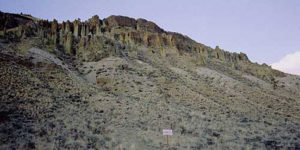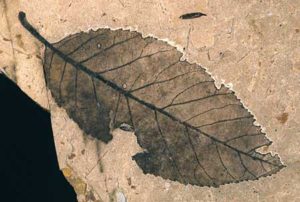Research Update from Thomas A. Dillhoff
Background
The Evolving Earth Foundation is currently investigating plant fossils from the McAbee deposit in central British Columbia.

The goal of the research is to identify and describe plant taxa from the locality by studying macrofossils and fossil pollen samples, to use plant fossil data to interpret the paleoclimate of the deposit, and to compare the McAbee deposit with other deposits of similar age in northwestern North America.
Deposit Description
The McAbee deposit is an Eocene age lakebed shale exposure located approximately 10 km east of Cache Creek, British Columbia. Preliminary dates place the age of the deposit at about 50 million years old. The exposure consists of 30 meters of lacustrine shales capped by basalts. The shales contain abundant macroscopic and microscopic remains of flowering plants and conifers as well as occasional fish and insect fossils. In general, the quality of preservation is excellent which allows for detailed examination and identification of the fossil organisms.
Activities

To achieve our goals, we are working to separate out and describe key features of all of the various plant fossil types found at the locality. We can then attempt to identify and describe the plant taxa with the kind cooperation of several paleobotanists. We can also use this information to understand the diversity of the flora, to determine which plant types were dominant in the forest, to compare the McAbee flora to other fossil floras and to modern forests, and to use data from the fossil leaves to estimate the paleoclimate at the time that the fossil forest was growing.
Visit our McAbee research page to learn more, and see images of the different plant fossil types that have been found so far.
